Canada
Photos
46 Photos
Per Page:
Filter Categories
All
Filters
Like sweeping brushstrokes of pink and green, the Belcher Islands meander across the deep blue of the James Bay portion of the Hudson Bay. The islands shown in this enhanced satellite image are part of the Belcher archipelago, which is comprised of approximately 1,500 islands and covers an area of 3,000 sq km (1,160 sq mi). The islands' only inhabitants live in the small town of Sanikiluaq, near the upper end of the middle island. Despite the green hues in this image, these rocky islands are too cold - and the soil is too thin - to sustain more than a smattering of low-growing vegetation. Image courtesy of USGS.
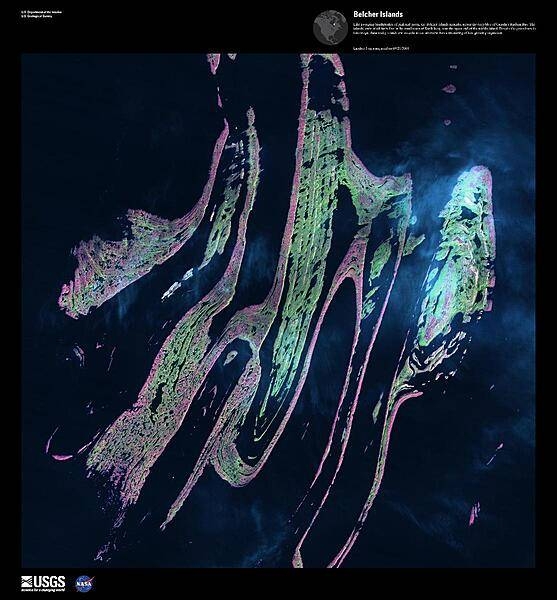
During the last ice age, Akimiski Island in the James Bay lay beneath vast glaciers that pressed down with immense force. As the climate changed and the ice retreated, Akimiski began a gradual rebound. The island's slow but steady increase in elevation is recorded along its naturally terraced edges in this false-color satellite image where the coastline seems etched with bathtub rings, the result of the rising landmass and wave action at previous sea levels. Image courtesy of USGS.
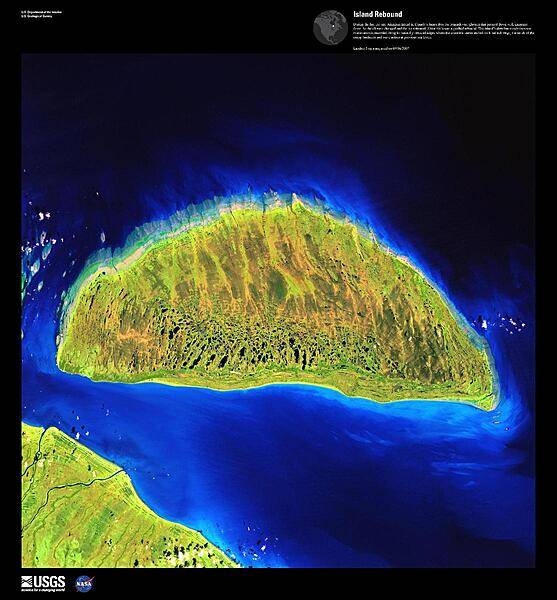
Akpatok Island, the largest island in Ungava Bay in northern Quebec, dominates this enhanced satellite image. Accessible only by air, Akpatok Island rises out of the water, sheer cliffs soar 150 to 245 m (500 to 800 ft) above the sea surface. The island is uninhabited, except for a Dorset (paleo-Eskimo) settlement that was abandoned by 1900 and a defunct exploratory oil drill, built in 1971. The island is an important sanctuary for cliff-nesting seabirds including its namesake the Akpat or the Thick-billed Murre, which nests in the pock-marked cliffs on the northern and southern ends of the island. Numerous ice floes around the island attract walrus and whales, making Akpatok a traditional hunting ground for native Inuit people. Image courtesy of USGS.
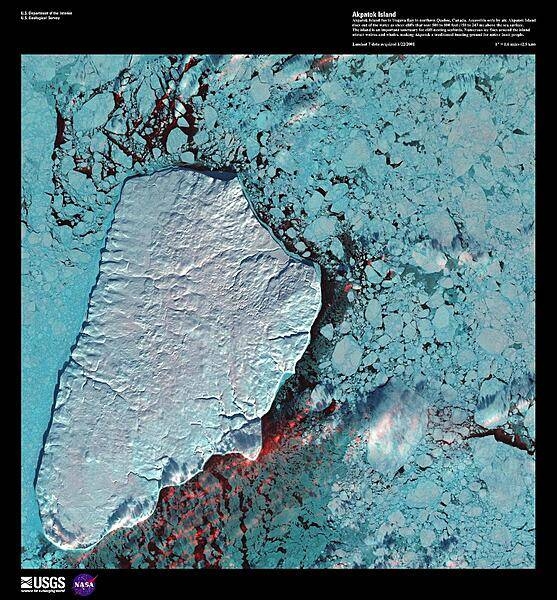
Extensive wetlands lie near the town of Yellowknife, just north of Great Slave Lake in the Northwest Territories. The hundreds of shallow lakes, shown as black in this false-color satellite image, have formed in grooves in the landscape that were carved by glaciers during the last Ice Age. The red in this image could represent grass or marshland, while the green is taller vegetation, such as shrubs and trees. Image courtesy of USGS.
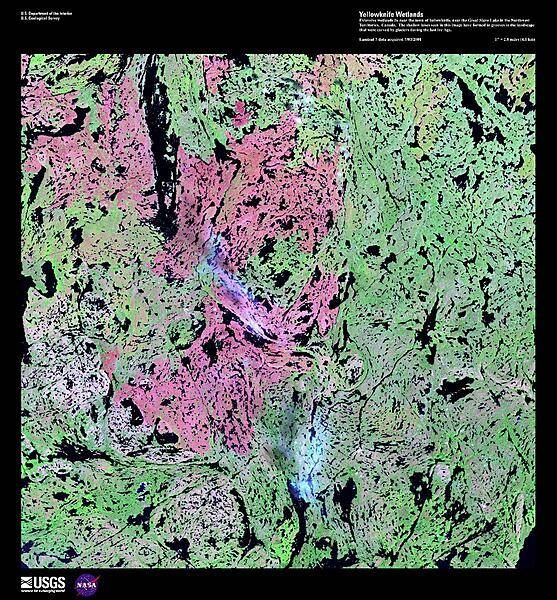
The Ontario Legislative Building in Toronto houses the viceregal suite of the Lieutenant Governor of Ontario, the Legislative Assembly of Ontario, and the offices for members of the provincial parliament.

"The Crystal," the new entrance to the Royal Ontario Museum in Toronto. The ROM is Canada's largest repository of world culture and natural history.
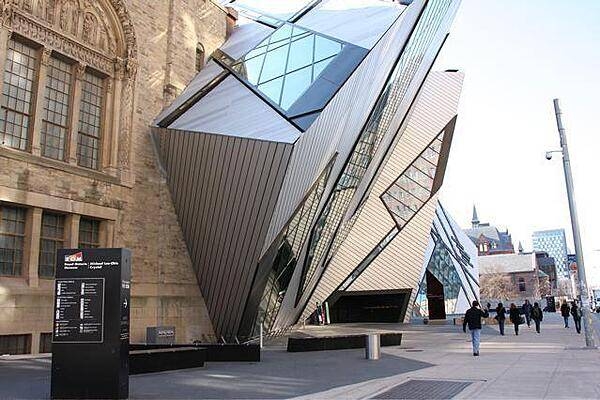
An "Old World" floor mosaic of Europe in the Royal Ontario Museum in Toronto.
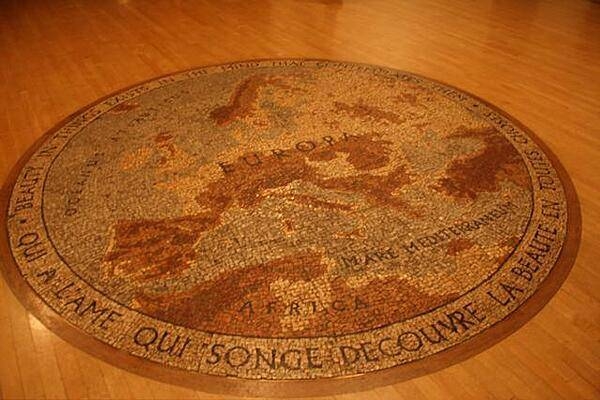
The mosaic ceiling in the rotunda of the Royal Ontario Museum in Toronto. The inscription in the middle of the dome reads: "That all men may know His work."

Fossil reptiles on display at the Royal Ontario Museum in Toronto.
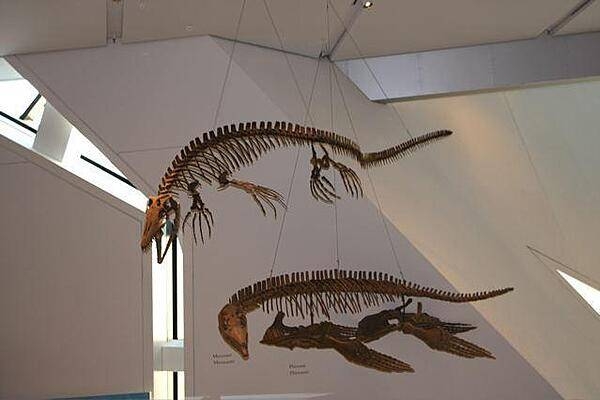
An Oriental exhibit at the Royal Ontario Museum in Toronto.
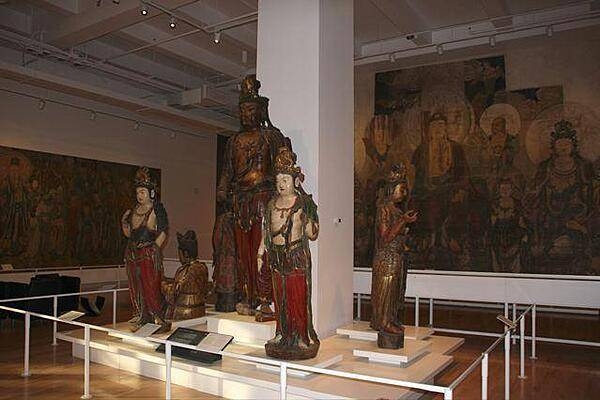
The historic Church of the Redeemer on the northeast corner of Bloor St. and Avenue Rd. in Toronto was completed in 1879. It is dwarfed by the massive Four Seasons Renaissance Centre.
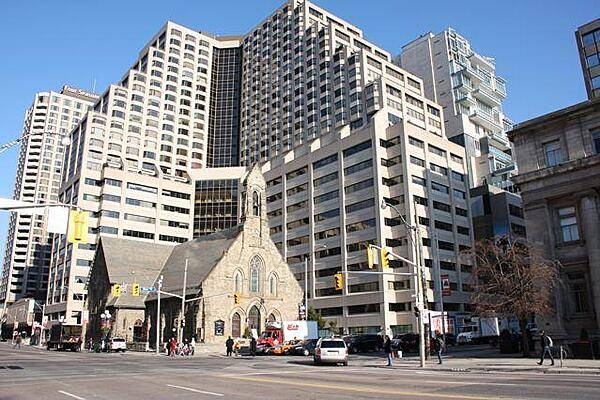
Inside one of the six conservatories at Allan Gardens, a park and indoor botanical garden in Toronto. Opened in 1860, Allan Gardens is one of the oldest parks in Toronto; it is named after a former mayor and senator who donated the land to the city.
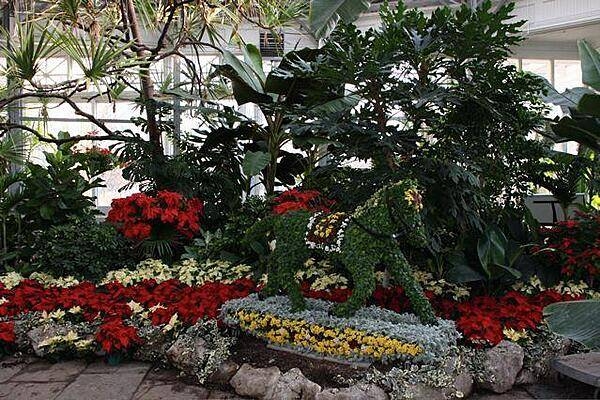
Page 01 of 04